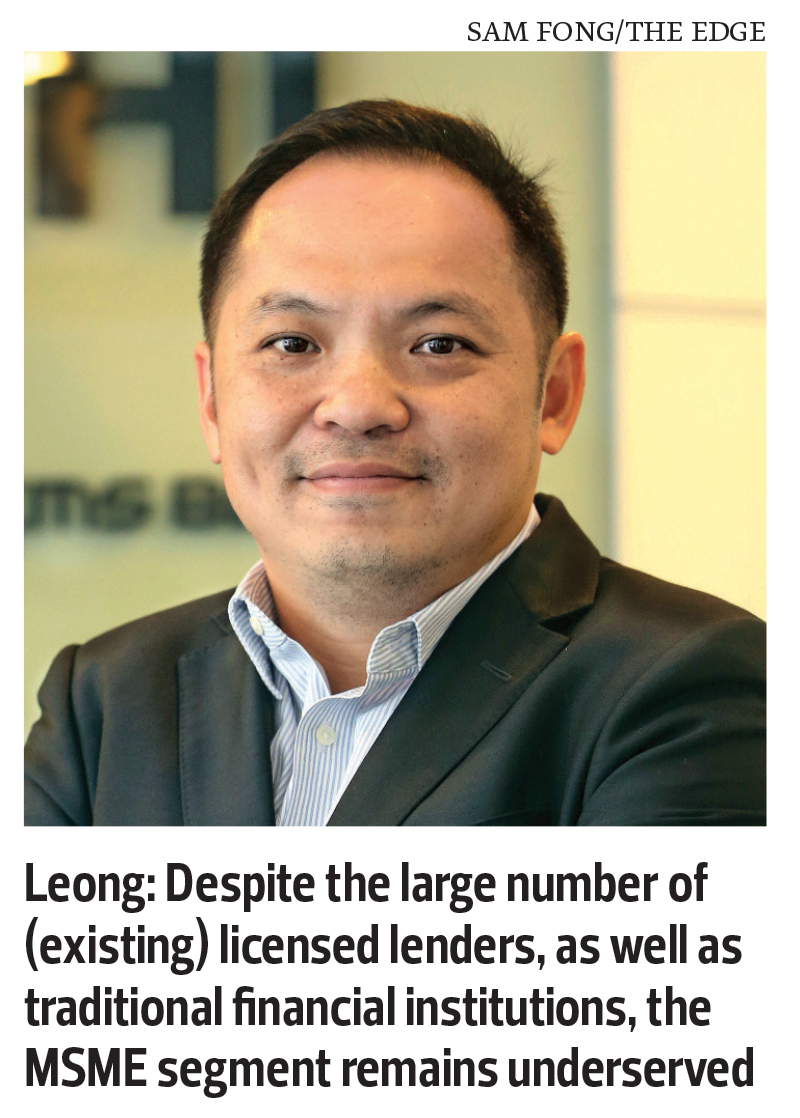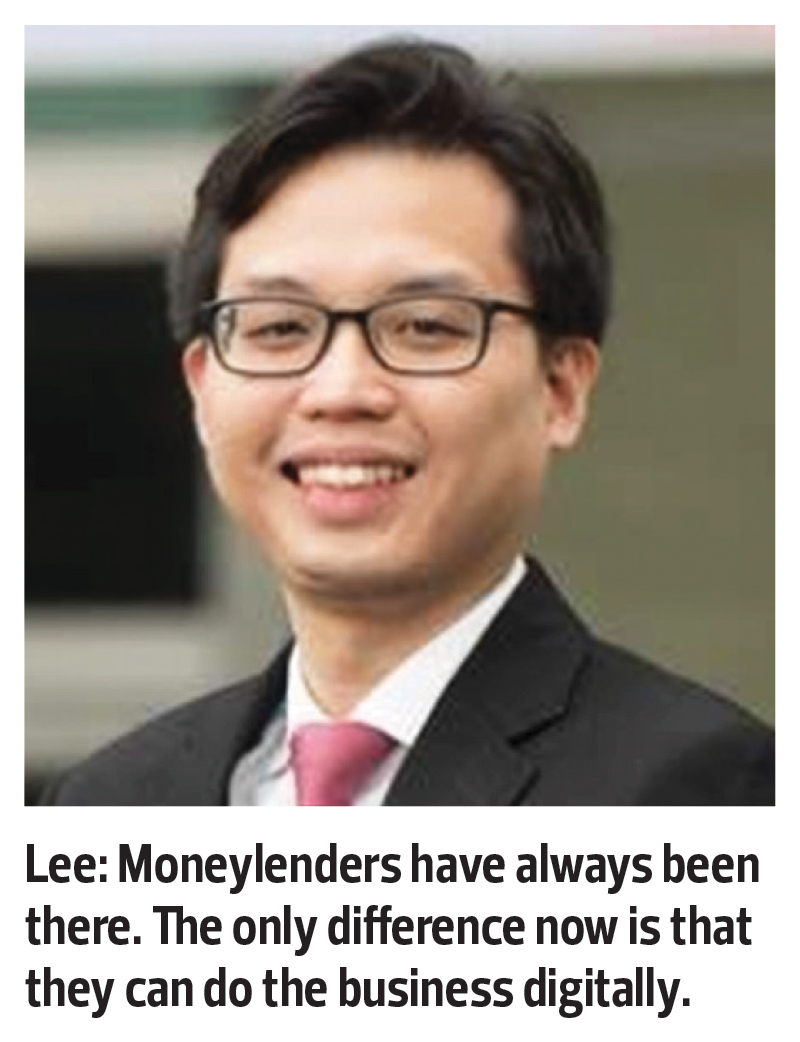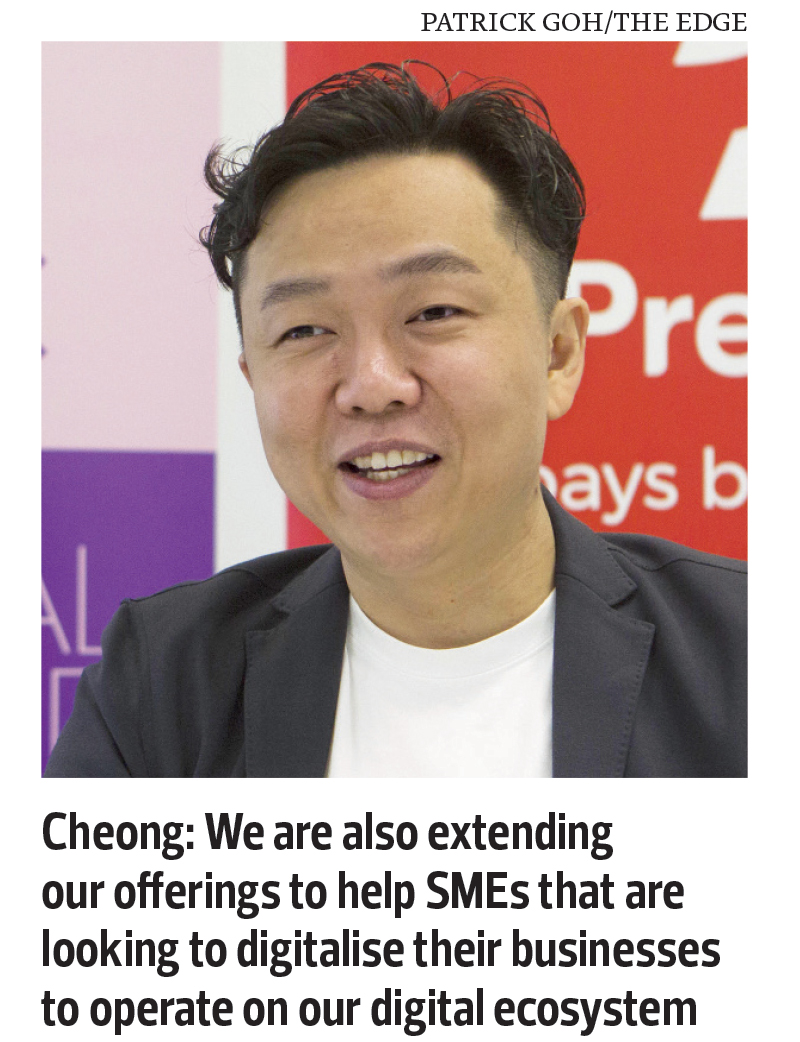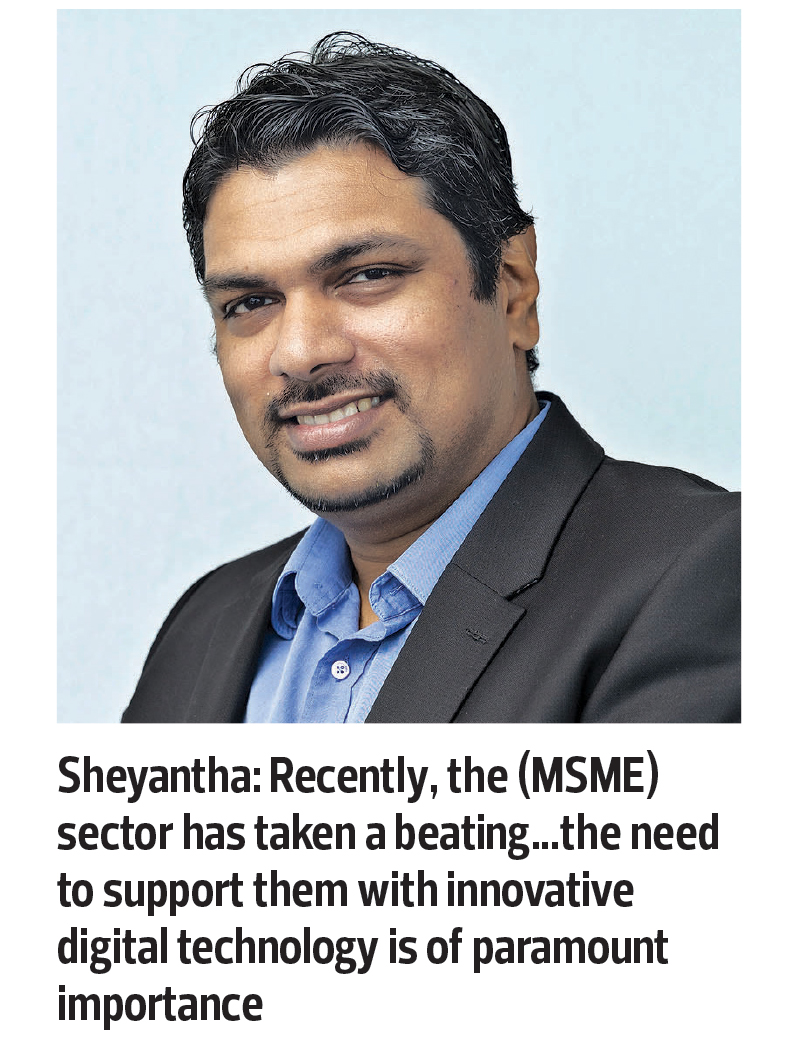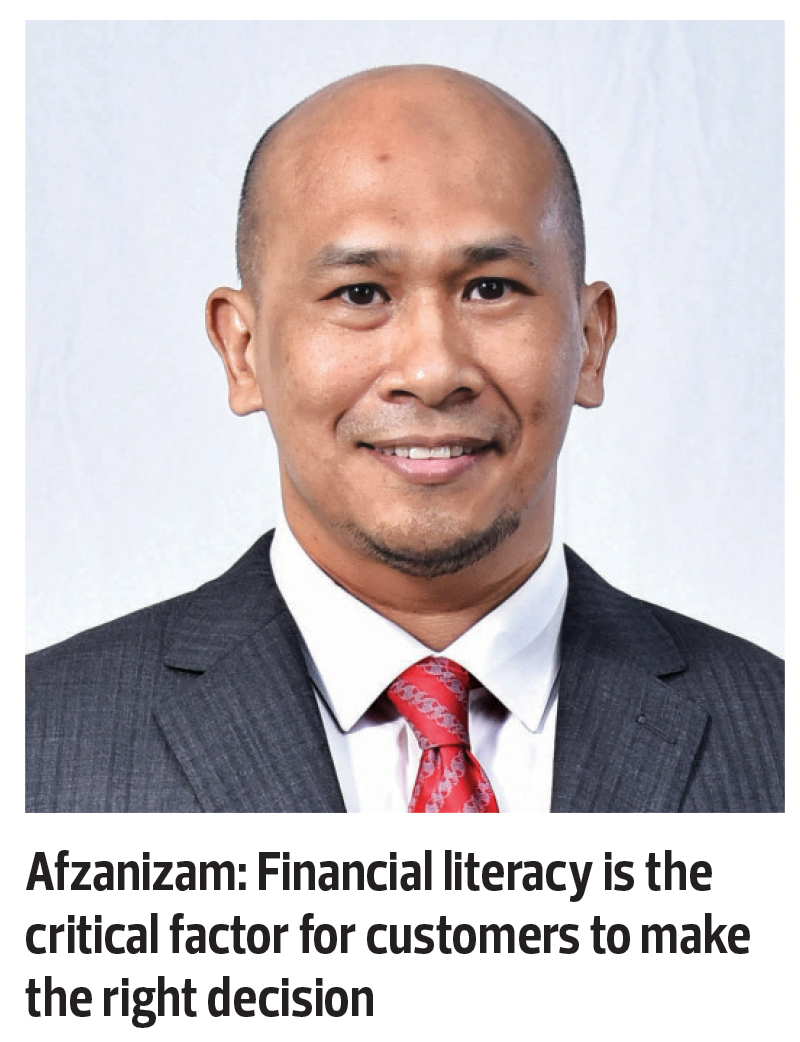
This article first appeared in The Edge Malaysia Weekly on November 23, 2020 - November 29, 2020
SMALL and medium enterprises (SMEs) lament that despite their essential role in job creation and contribution to the country’s economy, they continue to lack access to financial assistance, particularly from banks. But that is about to change.
On Nov 13, the Ministry of Housing and Local Government announced the approval of licences for eight new online moneylenders, on top of the 4,572 traditional licensed players already operating. The ministry, which governs the moneylending business, said more online moneylending licences would be issued in the future.
These online moneylenders have set their sights on the SME sector, promising fast and easy loans with limited collateral. The eight companies that were granted licences to provide loans online are GHL Payments Sdn Bhd, BigPay Later Sdn Bhd, Axiata Digital Capital Sdn Bhd, Grabfin Operations (Malaysia) Sdn Bhd, Presto Credit Sdn Bhd, JCL Credit Leasing Sdn Bhd, Fortune Tree Capital Sdn Bhd and Hoop Fintech Sdn Bhd.
Notably, four of them are owned by public-listed companies. GHL Payments is a wholly-owned subsidiary of payments systems provider GHL Systems Bhd, while BigPay is the financial technology (fintech) arm of AirAsia Group Bhd.
Axiata Digital is a wholly-owned subsidiary of telecommunications giant Axiata Group Bhd, while Presto Credit is a wholly-owned unit of digital services lifestyle provider PUC Bhd. Grabfin, meanwhile, is 60%-owned by The Edge Media Group chairman Datuk Tong Kooi Ong and 40% by Grab Financial Services Asia Inc, according to the Companies Commission of Malaysia (SSM). Grabfin is part of ride-hailing giant Grab’s fintech unit.
SSM data also shows that JCL Credit Leasing is wholly-owned by Japanese credit leasing firm Business Partner Co Ltd, while Go Maximont Sdn Bhd is the largest shareholder of Fortune Tree Capital with a 72.28% stake, followed by Paragon Point Sdn Bhd (14.4%), GoodKredit Malaysia CEO Cheok Tuan Oon (7.56%), GoodApps Inc (3.6%) and Fortune Tree Capital director Derrick Ng Keng Lin (2.16%). Hoop Fintech is majority-owned by its director Choong Yong Pang.
According to GHL Systems group CEO Danny Leong, the demand for financing by micro, small and medium enterprises (MSMEs) as well as individuals has risen given the cash flow crunch arising from the Covid-19 pandemic. “Despite the large number of (existing) licensed lenders, as well as traditional financial institutions, the MSME segment remains underserved. This presents opportunities to companies like GHL that view lending to this segment differently, especially when using technology to manage onboarding and risk assessment,” he says in an email response to questions from The Edge.
BigPay says in a Nov 18 statement that it is eyeing borrowers from the bottom 40% (B40) and middle 40% (M40) income groups. It aims to start offering loans to small businesses, entrepreneurs and individuals at “affordable rates” via its mobile app from early next year.
Aireen Omar — president of AirAsia Digital, the fintech arm of low-cost carrier AirAsia — is optimistic that the group’s ventures such as BigPay and the airasia.com super app will break even in 2021 and turn a profit by 2022.
While the new online financial offerings have the potential to shake things up for banks and moneylenders, industry experts and banking analysts do not see the development as a major threat to the country’s banking landscape as they each appeal to different target markets. MSMEs and the B40, for example, are not a major focus for banks given the high risks associated with lending to these segments.
According to Kelvin Lee, a financial services assurance partner at PwC Malaysia, banks are not likely to be overly worried about this new category of players that is inching into the lending space. “I don’t think so because at the end of the day, if you think about how the moneylending business works, the amount of money they can lend will be limited by the capital they have. So, it really depends on their source and size of capital.
“The amount of loans they can lend out or the growth of the loans will be limited by how much internal capital that these companies have because, unlike banks, they can’t take deposits from the public,” he tells The Edge, suggesting that the loans extended by such companies would be relatively smaller.
Lee says moneylenders complement the offerings in the financial services space. “Moneylenders have always been there. The only difference now is that they can do the business digitally.”
PUC managing director and CEO Cheong Chia Chou concurs. “With Presto Credit’s niche micro-lending offering, we are not in direct competition with the majority of moneylenders. Our financial assistance is solely used to purchase tangible products and services within Presto,” he says.
“This ensures the funds disbursed are only used for legitimate purposes, where all transactions are digitally logged and available for audit when necessary. Such positioning is not easily replicated, due to the existing scale of Presto’s services.
“Presto Credit is targeting consumers who wish to stretch their dollars to purchase home essential items such as home appliances, home office equipment, groceries and related products. We are also extending our offerings to help SMEs that are looking to digitalise their businesses to operate on our digital ecosystem.”
Presto Credit’s micro-lending scheme enables consumers to obtain micro-loan approvals on-the-go for their purchases within the Presto ecosystem. Credit offered will be disbursed into a Presto account and it can only be used within the Presto ecosystem to purchase products and services from multiple categories, including daily necessities such as groceries, food delivery and household essentials.
But there are hurdles ahead. Many still associate moneylenders with loan sharks or Ah Long, despite efforts last year by the Ministry of Housing and Local Government to rebrand licensed moneylenders as “community credit companies”. Recent reports of China-based mobile lending apps being banned in India do not help matters.
Housing and Local Government Minister Zuraida Kamaruddin reportedly said that although the performance of the licensed moneylenders is good, the negative perception has made individuals or small traders shy away from getting loans from them.
Some critics also worry about the emergence of online moneylenders, given how Malaysia’s household debt-to-GDP is high, at 87.5% as at end-June.
Bank Islam Malaysia Bhd chief economist Mohd Afzanizam Abdul Rashid says from an access to finance point of view, the emergence of such players is positive as it gives prospective borrowers more choices to match their financing needs. However, he points out that banks continue to have an advantage over moneylenders, who have been around since the 1950s.
For starters, banks are highly regulated by Bank Negara Malaysia in almost every aspect of their business — capitalisation, liquidity and risk management — and hence will be able to withstand difficult times such as now. Additionally, customers can lodge a complaint with the central bank over any mistreatment by banks.
“In that sense, households with elevated levels of debt — mortgages, car financing, credit cards, personal financing and so on — would be more protected if they are customers of a bank. The way we see it, the customers would make the final call over whether to borrow from banks or moneylenders. Financial literacy is the critical factor for customers to make the right decision,” he tells The Edge.
Meanwhile, online moneylenders have an edge over their traditional counterparts as customers will be able to secure loans much faster from them. Under the old guidelines, customers had to physically present themselves at the premise of the lender.
GHL Systems’ Leong explains, “The digital lending guidelines will enable the faster onboarding of borrowers using technology, which is different from the traditional loan process application of existing lenders. We can now deliver this service within minutes.”
“We want [licensed moneylenders] to cater to the MSMEs. For example, [entrepreneurs] who want to borrow a small amount, say RM500, to start a small nasi lemak business … they can’t go to the bank for this, [but] they can go to the credit community companies,” Zuraida said during the virtual launch of the ministry’s online lending guidelines on Nov 13.
Of the 4,572 traditional licensed moneylenders in Malaysia, the bulk is in Sabah (about 1,600), followed by Selangor (893) and Kuala Lumpur (561), she noted.
Sheyantha Abeykoon, executive director of Aspirasi, the digital financier under Axiata’s digital services arm Axiata Digital, notes that 98% of registered businesses in Malaysia are from the MSME segment and are a significant driver of economic activity. SMEs contributed 38.9% to the national income last year from 38.3% in 2018, according to the Department of Statistics Malaysia. The figure is expected to grow to 41% this year.
“Even during the best of times, they struggle to generate sufficient capital to support their businesses. According to the Economic Report 2019/20 released by the Ministry of Finance, 70% of MSMEs sourced their financing needs internally through personal savings or from friends and family because they are unable to get any financial assistance due to insufficient collateral and lack of documentation,” he says.
“Recently, the sector has taken a beating, with the impact of the pandemic and general slowdown in economic activity. So, the need to support them with innovative digital technology is of paramount importance.”
Sheyantha says Aspirasi provides a quick three-minute online process that requires limited collateral. “If approved, the funds are deposited into the applicant’s account within 48 hours. The platform also provides micro-insurance plans to further protect MSMEs and individuals [so they can] get back on their feet during unforeseen circumstances.”
He adds that the platform has disbursed more than RM190 million since 2019.
The ability to offer loans is part of Axiata Group’s seven-year journey into fintech and the wider digital ecosystem, as it saw the need to invest in its digital future for the growth and sustainability of the business, says Sheyantha.
Same contenders going for digital bank licence
Interestingly, several of the eight online moneylenders are likely to apply for a digital bank licence. Grab, BigPay, Axiata Group, GHL Systems and PUC previously said they were keen to apply for such a licence. Bank Negara is expected to open up applications for up to five digital bank licences early next year, once it issues the guidelines by this year-end.
PwC’s Lee says this would be consistent with the route that many technology and fintech players in other markets such as Hong Kong and Singapore have taken before obtaining digital bank licences.
“Digital bank licences are not easy to obtain as they are regulated by Bank Negara. If there is an available money lending licence, they will go for that first. If they can run their online moneylending business successfully, it will strengthen their case with the regulators if they ultimately decide to apply for the digital bank licence,” he adds.
Digital banks, meaning those with no physical presence, in Malaysia are meant to focus only on segments that are underserved or unserved by current lenders.
GHL Systems’ Leong says its lending operations are at the nascent stage, but it is a natural evolution of the value-added services that it intends to offer its current and new payment merchant base. This would include micro-financing, micro-insurance and micro-wealth management, as well as other digital services.
“One of our advantages is that we have an existing customer base to tap, that is, our MSME merchant base, which is currently using our payment services. Given the business familiarity, it would enable us to tailor the ‘right’ type of financing to suit the needs of small borrowers,” he adds.
Apart from Malaysia, GHL Group has been granted similar licences by the authorities in Thailand and the Philippines to offer lending in those countries. “GHL Systems piloted micro-lending in Malaysia and Thailand towards end-2019 but slowed down in the light of Covid-19. However, we will be resuming our lending activities soon. GHL Philippines will commence lending towards end-2020,” says Leong.
PUC’s Cheong says that in terms of micro-lending services, it is focused on Malaysia for now. “But we are exploring the creation of innovative solutions to expand and scale our Presto platform to offer services in regional markets through our partners, including China, Thailand, Vietnam and Indonesia.”
Save by subscribing to us for your print and/or digital copy.
P/S: The Edge is also available on Apple's AppStore and Androids' Google Play.
